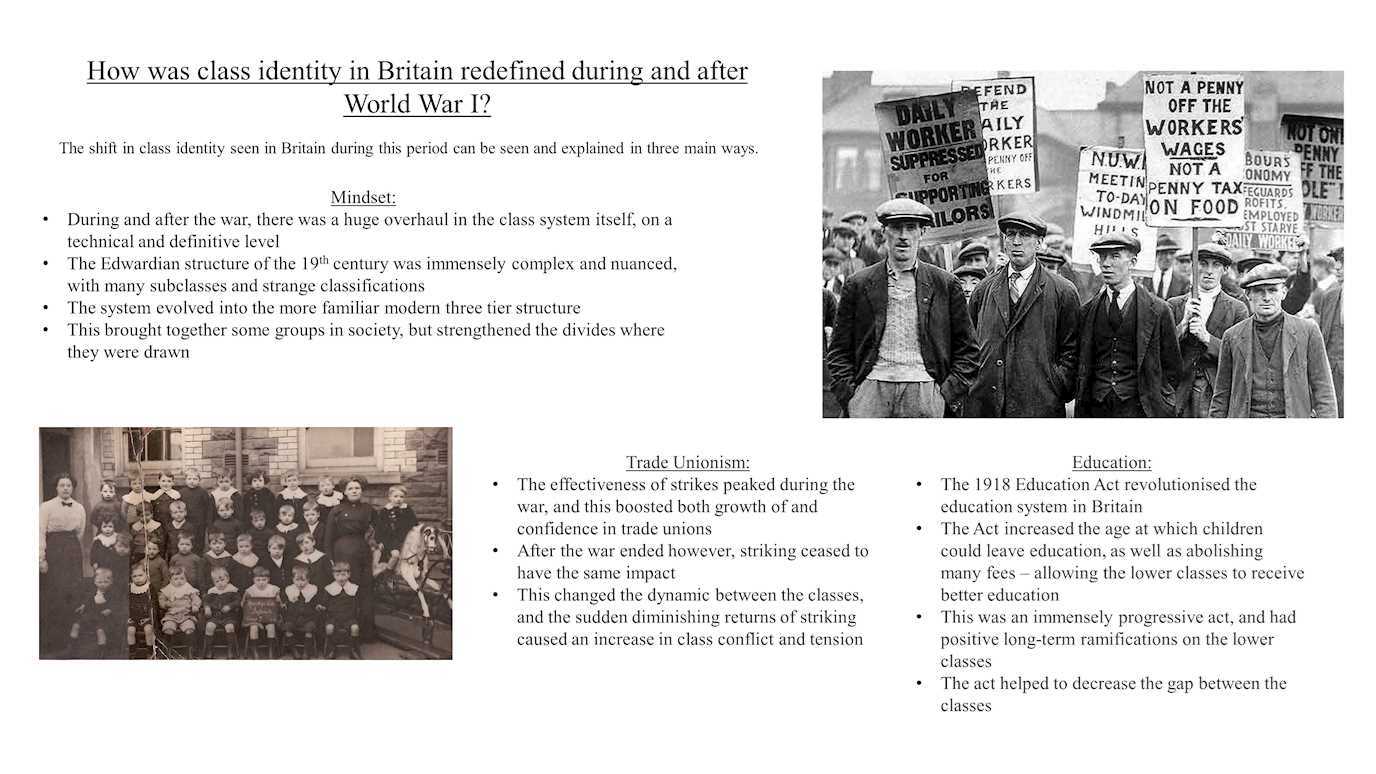How was class identity in Britain redefined during and after World War I?
During my research, it became clear that whilst there were many reasons why class identity shifted, three stood out as the most crucial: Mindset, trade unionism, and education.
Mindset:
The change in class definitions and the systems of classifications had a huge impact on how people saw their own class and others. Groups that were previously divided by strange and vague and outdated definitions were brought together by this shift. The flipside of this was that the divisions in society became stronger and thus so did the tensions and conflicts. The classes were expanded, and this brought about more togetherness in some respects and more conflict in other respects.
Trade Unionism:
Prior to the war, trade unions were growing in number. However, the striking was largely ineffective. This changed during the war, as the economy and the war effort could not sustain strikes as much as was previously possible. Strikers received almost immediately what they asked for during the war, and this gave confidence to the working class. After the war however, the economic boom meant that these strikes were once again largely ineffective. This spike in the importance of striking and trade unionism led to an increase in class tensions.
Education:
The 1918 Education Act was a massive step forward for the lower classes. The legislation energised the education system. The minimum leaving age was lifted to 14, and part-time education was offered for 14-18 year olds in employment. The act also abolished all fees in state schools, crucial to the development of the working classes. This really levelled the playing field between the classes, and can be linked to the rise of the Labour party that the century saw.
All these factors contributed to the shift in class identity that occurred during and after the First World War.





















